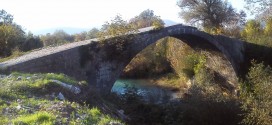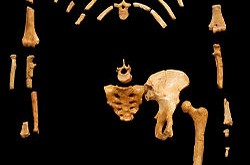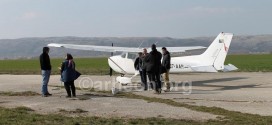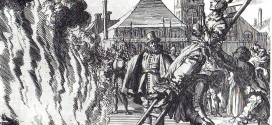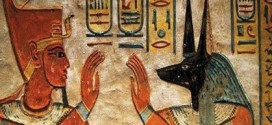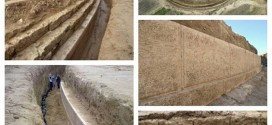43 years ago (1974) Donald Johanson and Tom Gray discovered Lucy. She was found near Hadar in Ethiopia at nearly 3.2 million years old. Lucy belonged to the extinct hominid species Austrolapithecus afarensis (Hadar being the site with the greatest number of remains) wide spread across Eastern Africa. Australopithecus afarensis …
Read More »Recent Posts
The European Museum of the Year Award 2017: Museums of Southeastern Europe
Since 1977 the Council of Europe evaluates the success of the European museums with the European Museum of the Year Award. The award has been given to succssesful museums in the area of innovative realizations and in making distance from traditional views on museum function which more emphasises its own …
Read More »Red Couch Interview with Karsten Bracker
U novoj epizodi Red Couch Interview ugostili smo Karstena Brackera, mladog njemačkog arheologa koji piše rad na temu politike nastanka nacija i njezine povezanosti s arheologijom na području zapadnog Balkana, s posebim naglaskom za Bosnu i Hercegovinu. Odgovorit će na pitanja koja se tiču arheologije u Bosni i Hercegovini, svog iskustva …
Read More »Committee on the Teaching and Training of Archaeologists practical skills training survey
The European Association of Archaeologists’s (EAA) CTTA is planning to discuss practical skills training in European Archaeology at its annual round table at the EAA 2016 conference in Vilnius, Lithuania. To prepare for this Round Table and to collect data on practical skills training provision in European Archaeology, we have …
Read More »Red Couch Interview with Robert and Julie from Stone and Compass
U prvoj epizodi web serije Red Couch Interview drago mi je ugostiti Roberta i Julie, naše partnere iz Stone and Compass Balkan Ecotourism and cultural Retreat. In the first episode of the Red couch interview I am pleased to talk to Robert and Julie, our partners from Stone and Compass …
Read More »Red Couch Interview – intro
Red Couch Interview je serijal u kojem ćemo ispred portala i udruge Arheon ugostiti i razgovarati sa stručnjacima iz različitih područja znanosti. Video materijal bit će na hrvatskom i engleskom jeziku, te popraćen titlovima. U prvoj epizodi razgovarat ćemo sa Robertom Goodwinom i Julie Kiernan, osnivačima kulturno-obrazovnog centra Stone & Compass Balkan …
Read More »The Forgotten Bridge near Čapljina
When a number of tourists, in their search for peace and nature, head to visit Herzegovinian Nature Park “Hutovo blato”, they go past the small bridge in Klepci, Čapljina. The bridge is one of the oldest examples of Ottoman architecture in Bosnia and Herzegovina. However, although the bridge is only …
Read More »Interview with Gustav Wollentz
At the moment, Gustav Wollentz, a PhD Candidate in Archaeology from the Graduate School of Human Development in landscapes, Kiel University (Germany) is doing a research project, and Mostar is taken as one of his case studies. Even though he is carrying out his PhD thesis in Germany, Gustav originally …
Read More »Fictional narrative: Bosnian Pyramids
It’s been 9 years since Semir Osmanagić claimed to have discovered pyramids at the site of Visočice. Over the past several years public support to this self-proclaimed researcher went from great elation and media attention, including a documentary film about the pyramids, to disappointment and censorship. With media censorship it seemed …
Read More »In Memory of Zdenko Brusić
We are saddened to inform our readers that dr. Zdenko Brusić, Croatian archaeologist and scientist died at the age of 76 in Zadar. Professor Brusić will be remembered as a pioneer in Croatian hydroarchaeology. Born in Šibenik on 16. September in 1938. In his hometown he attended primary school, finishing …
Read More »Reconstruction of the Museum in Doboj
Written by: Aleksandar Jašarević, archaeological curator By the end of the year, work will be completed on sanitising the Museum in Doboj, affected by the May floods. The worst hit parts of the building were in the basement areas, where due to flood water accumulating over a few days led …
Read More »The Results of the Archaeon Summer Games
The results are in for the Archaeon competition for which we welcomed you to share your photos taken at a favourite location with us. Our jury gave the results: Adela Custo, Mostar, art historian, Amra Dragnić, Sarajevo, MA in Architecture, Igor Kuvač, Banja Luka, MA and PhD student at the …
Read More »Cut – stone tools of the Hvar – Lisičići culture
Examples of cut – stone tool specimens include flint blades, drills, scrapers and arrowheads. Blades found in Lisičići mostly have a trapezoidal section, though blades with triangular – shaped sections have also been found. Examples that Benac categorised, due to their length and mass, were placed in the category of …
Read More »Regional conference: Balkan museums without borders
Last week (28.-29.10) the regional conference of the “Cultural Heritage without Borders” (CHwB) and the “Balkan Museum Network” (BMN) was held in Sarajevo. The two – day conference entitled “Balkan museums without borders: The continuation of disability access to museums and heritage in the Western Balkans” brought together people with …
Read More »Prehistoric Hill Forts in Herzegovina and Croatia
Many sites which are called hill forts or “Gradina” (Grad, Gradac, Gradište and similar) hide the remains of prehistoric material. There has been little research on them historically. Vaclav Radimsky, Friar Fiala, dr. Ćiro Truhelka and other archaeologists have only partially dedicated their time to the research of these sites. Most hill …
Read More »Pioneering aerial archaeology project in Bosnia and Herzegovina
From March 18th to March 20th 2014, a team of archaeologists gathered to initiate the first archaeological air recon over ‘Duvanjsko polje’, being the first of its kind in Bosnia and Herzegovina. The team comprised professors from the department of archaeology od University of Ljubljana, Darja Grosman and Tina Milavec, …
Read More »Medieval torture devices – Part 2
This is the final part of the text begun on the inquisition. The theme is far from ideal, and I shall mention another 6 devices of torture in this part, some of which served the inquisition. A thank you to all the readers who took an interest in this. The …
Read More »Medieval torture devices
The Inquisition is a part of medieval history. What really sets this era of history apart is the morbid inventiveness that went into the creation of diverse methods of torture. The reasons for this being heresy and criminal activity. This article will present 6 methods and devices of torture. The …
Read More »Tomas de Torquemada – the great inquisitor
Born in Valladolidu in the year of 1420. In his early life he approached the Dominican religious order in Valladolidu. In 1483, the Pope declared him the Great inquisitor of Castille, and shortly after, nearly all of Spain. Torquemada directed all of his efforts to destroying the Marranos, Jews that …
Read More »The case of the Inquisition against the accused
The trial of the Inquisition was such that the accused had no chance. The Inquisitor was a prosecutor and a judge, and any accusation was taken as evidence. The evidence along with charges against the accused were not made available to them. even though the defendans were urged to confess …
Read More »Many a true word said in jest. :D
Use it for talking
High five!
Beauty in prehistory
Understanding of female beauty has changed a lot since prehistoric times. We can say that ideal of female beauty in paleolithic was Venus of Willendorf. In ancient Greece and Rome curvy women (as opposed to skinny or fat) were considered to be most beautiful ones.
Read More »Eddie Izzard on Latin and Romans
The Inquisition
In general: The Inquisition was a church – civic institution for the research and eradication of heretical perversion. It was divided into the Roman or papal and Spanish inquisitions. The Inquisition was established by Pope Gregory IX in the first half of the 13th century, when it began sending inquisitors, …
Read More »Gaius Valerius Catullus
Cui dono lepidum novum libellum arida modo pumice expolitum? Corneli, tibi: namque tu solebas meas esse aliquid putare nugas. Iam tum, cum ausus es unus Italorum omne aevum tribus explicare cartis… Doctis, Iuppiter, et laboriosis! Quare habe tibi quidquid hoc libelli— qualecumque, quod, o patrona virgo, plus uno maneat perenne …
Read More »Have archaeologists discovered the grave of Alexander the Great?
Recently a huge Macedonian round tomb has been discovered in Amfipolis (Greece). The tomb has a diameter of 500 meters and the stones around the tomb are 3m high. It dates back in the 4th century BC. Archaeologists believe that this is a royal tomb, and some of them assume …
Read More »Göbekli Tepe
The site of Göbekli Tepe is best known as the oldest example of monumental architecture. It is set around 9600-8200 BC. It was most likely raised by hunter-gatherers as the first permanent sanctuary in the world. A few stone rings have been discovered, and geomagnetic recording identified at least 20 or …
Read More »Europa Regina
Europa regina, a popular cartographical form of Early Modern period that depicted Europe as a graceful Queen, with Spain as her head and Prague as her heart. The map was published by cartographer Johannes Putsch in 1537. Though much about the origination and initial perception of this map is uncertain, it is …
Read More »About Archaeon – New Archaeology Website
Who is behind Archaeon? We are a group of young Archaeologists who want to change the state of Archaeology in Bosnia and Herzegovina. This process is not easy because local Government offers us no financial or any other support and everything we do from now on is at our own …
Read More » Archaeon Arheološki portal Bosne i Hercegovine
Archaeon Arheološki portal Bosne i Hercegovine







